Past Fellows
Davide Spagnoletto
FALL-WINTER 2023-24
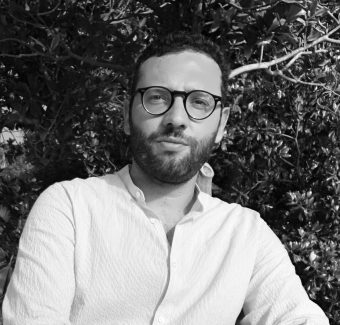
Davide Spagnoletto is a PhD candidate in Historical-artistic Studies at Università Roma Tre. His doctoral research is dedicated to Jewish artists in Italy from emancipation to the birth of the state of Israel and investigates the art practices of some figures who were active between 1848 and 1948, with a focus on sculpture. The intention is to consolidate critical positions that do not align with particular Jewish characteristics in their works and to analyze the response of these personalities to social and political changes. The study is based on the analysis of works and documents from public and private archives.
Davide received a degree in architecture from La Sapienza University in Rome and continued his studies at the School of Specialization in Historical-Artistic Heritage at the University of Macerata with a thesis on the collection of Toti Scialoja and Gabriella Drudi, which reconstructs their relationships with several Italian and American artists. He collaborated with the Jewish Museum of Rome where he co-curated ‘Roma 1948. Italian Art towards Israel‘ (April-October 2023) stemming from his research on an exhibition for the State of Israel that took place in Rome in 1948.
The exhibition features previously unpublished works from the Tel Aviv Museum of Art (including Carla Accardi, Afro Basaldella, Corrado Cagli, Carlo Levi, Giuseppe Capogrossi and Renato Guttuso).
His recent publications cover the relationship between sculpture and architecture in the entrance to the Vatican Museums created in 1932 (Bollettino dei Monumenti Musei e Gallerie Pontificie, 2022), as well as the correspondence between Corrado Cagli and Amelia Della Pergola and Anna Laetitia Pecci Blunt (Edifir, 2022).
As a fellow at CIMA, Davide intends to analyze the path undertaken by some Italian Jewish artists who chose exile in America after the promulgation of racial laws. The aim is to investigate how Corrado Cagli and Dario Viterbo’s exclusion from public life and departure from their homeland affected their work by bringing in new iconographic elements. The study aims to show how Jewish identity reappears in opposition to exclusion from the context of belonging. Each of them found themselves negotiating a new role within society by testing different strategies to create new relationships with other Italians and Jewish exiles.
Filippo Bosco
FALL-WINTER 2023-24
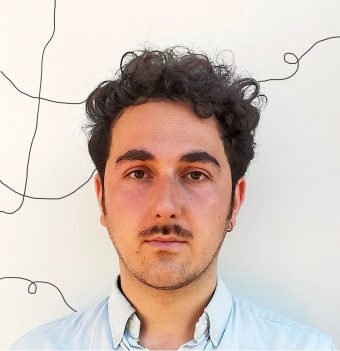
Filippo Bosco is a final year PhD candidate in Contemporary Art History at the Scuola Normale Superiore, Pisa. His dissertation, entitled Drawing and Conceptualism: Paradigms, Practices and International Exchanges in Italy (1969-1979), shows how drawing has been a defining, if underestimated, feature of art practices usually associated with a post-medium condition, from Arte Povera to post-conceptualism. A historical analysis based on archival research and material analysis reconstructs the circulation of drawings in exhibitions and the art market, and their relevance for the critical debate and the exchanges with European and American artists.
Filippo completed his BA and MA degree at the Scuola Normale Superiore and the University of Pisa, with thesis on Felice Casorati and Italian and German painting in the 1920s. His doctoral research was carried out at the Free University in Berlin and in Houston, where he was the 2021-22 Pre-Doctoral Fellow at the Menil Drawing Institute. His interests and publications include early 20th century Italian painting and criticism, with catalogue essays on Felice Casorati (2023) and Ubaldo Oppi (2021); queer art criticism (Whatever 2021) and themes of drawing in the seventies (Studi di Memofonte, 2018; Penone, Pompidou, 2022; The Burlington Contemporary 2023); he is currently working on a book about Giuseppe Penone’s early years. He collaborated with the GAM in Turin (where he cocurated an exhibition on Giacomo Balla) and the Castello di Rivoli, where he contributed to the catalogue of the Cerruti Collection (2021).
His research project at CIMA will use marginality as a category to approach the exile drawing of Corrado Cagli (1938-1947). Cagli, a Jewish and queer painter who was racialized by the fascist regime and emigrated to the United States, had to limit himself to drawing during his military training and his career as a war artist. Drawings were sent and received to sustain his social and affective relationships both through distance (from Rome) and in his new milieu in New York. By developing a framework for cultural and theoretical marginal positions, Filippo will investigate such themes of Cagli’s draftsmanship as testimony, identity and queer affection.
Giorgio Di Domenico
WINTER-SPRING 2023
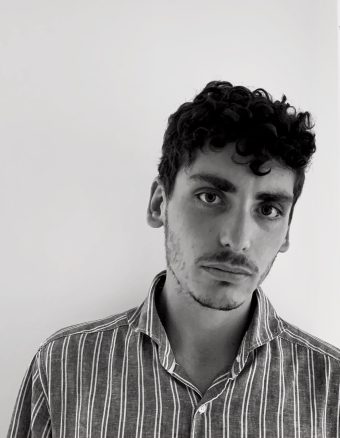
Giorgio Di Domenico is a Ph.D. candidate in Art History at Scuola Normale Superiore, Pisa. His doctoral research focuses on the reception of Surrealism in Italy in the 1960s and 1970s. He aims to demonstrate how central Surrealism has been to postwar Italian artists, including those without official or overt ties to the movement. He bases his research on visual analysis, framed within a broader context of cultural studies and archival-based research.
He attended the Scuola Normale Superiore and the University of Pisa for his BA and MA, defending theses on Jannis Kounellis’s Rose Paintings and the Italian artists’ magazine La Città di Riga, to which he also devoted a forthcoming monograph. He interned at La Galleria Nazionale in Rome and the Italian Cultural Institute in New York. In spring 2022, he was a visiting student at the Casa Italiana Zerilli-Marimò at New York University. His publications include essays on the work of Jannis Kounellis (Studi di Memofonte, 2018; Paragone, 2022), the practice of Alberto Burri in the 1970s (Annali della Scuola Normale, 2021), and the relationship between Burri and Robert Rauschenberg in 1950s New York (Prospettiva, 2022). More recently, Giorgio started to engage in contemporary art criticism: he occasionally writes in Antinomie and Flash Art.
His research project as a CIMA fellow will combine various approaches to the relationships between Surrealism and advertising, analyzed from an Italian perspective. His focus will be the reception of Surrealist imagery by Italian advertising graphics from the 1930s to the 1970s. A second research theme will be the circulation of the advertising production of Surrealist artists in Italy, with specific insights into the activity of Salvador Dalí and Giorgio de Chirico. Finally, the last part of his research will focus on the Surrealist influence on Mimmo Rotella’s oeuvre.
Marcella Martin
WINTER-SPRING 2023
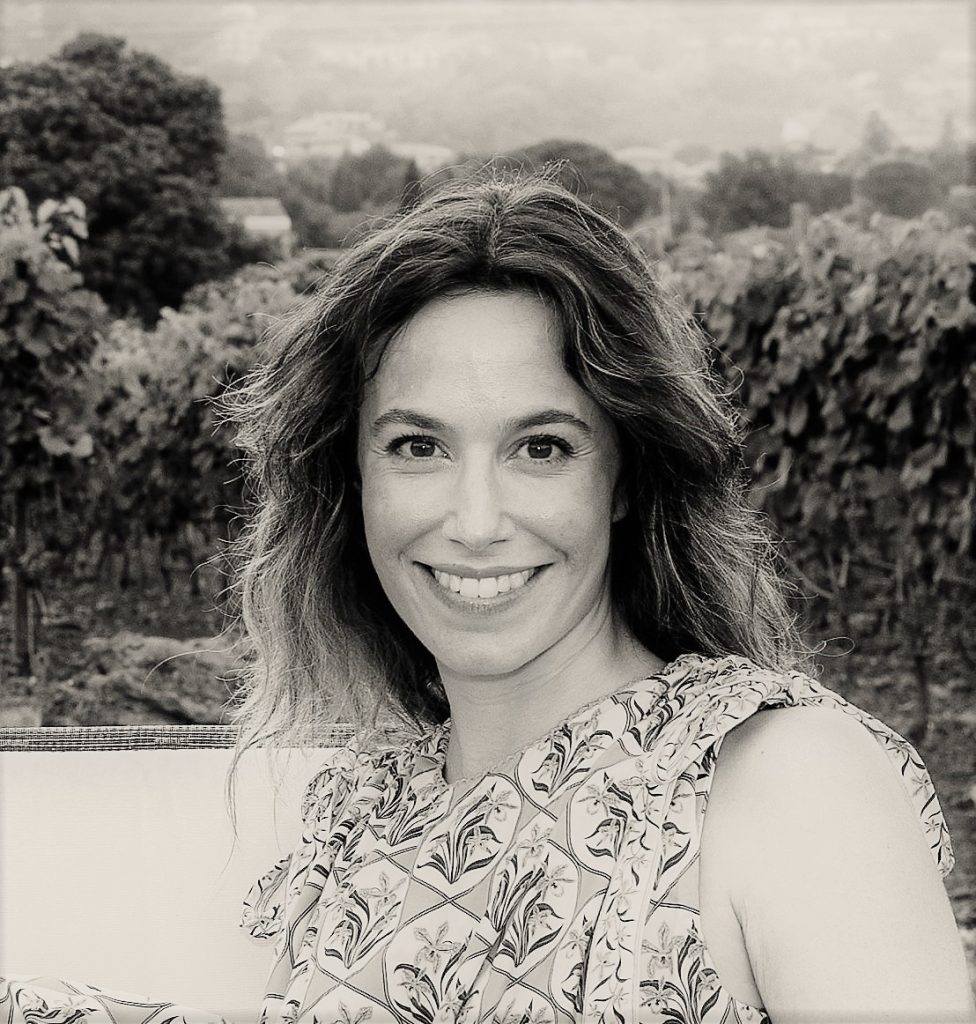
Marcella Martin is a PhD Candidate in the Department of Italian Studies at New York University. She holds a Master’s degree in Visual Culture: Costume Studies also from New York University. Prior to beginning her doctoral studies she was a Lecturer in the history of fashion and Curator of the Textile and Costume Collection at Jefferson University in Philadelphia, Pennsylvania. She has published on the topics of museum studies and costume history, most recently in a co-authored essay entitled “Heritage narratives in the digital era: How digital technologies have improved approaches and tools for fashion know-how, traditions, and memories” in the Research Journal of Textile and Apparel. She is currently working on her dissertation project tentatively titled: “Fondazione Fashion: Contemporary Art, Brand Museums, and the Pursuit of Modern Italy” in which she uses four exhibitions of Italian art and fashion to trace the prehistory of brand museums and their unique relationship to contemporary art in Italy.
During her fellowship with the Center for Italian Modern Art, Marcella will be working on a project entitled “The Fashion of Advertising: Reference and Reproducibility, 1930-2018”. This project uses the art of commercial posters as a starting point to study the limits of reproducibility, from images to artworks to exhibitions. It takes the world of fashion and fashion advertising as its particular point of inquiry, attempting to understand the interplay between the visual language of fashion and the work of art, from Fortunato Depero’s failed Vogue covers in 1930 to the cultural backlash towards Dolce & Gabbana advertisements in the 2010s.
Margaret Scarborough
Fall-Winter 2022-23
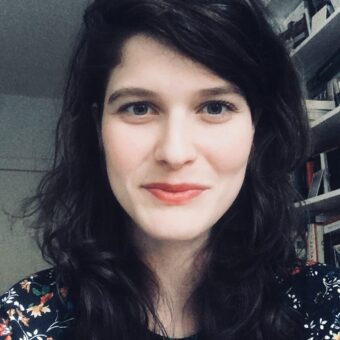
Margaret Scarborough recently completed her PhD in Italian and Comparative Literature at Columbia University. Her dissertation examines the influence of philology on conceptions of selfhood in postwar Italy. At CIMA, she is excited to study midcentury approaches to gesture and human spontaneity in the thought of Italian author and designer Bruno Munari and British psychoanalyst D. W. Winnicott.
Giulia Zompa
Fall-Winter 2022-23
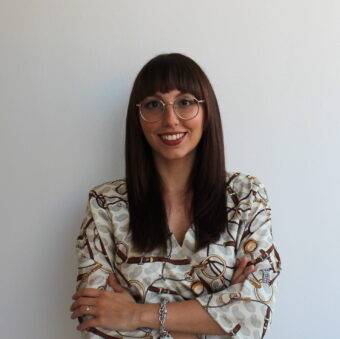
Giulia Zompa is a final year Ph.D. Student in Contemporary Art History at the University of Milan (Italy). Her doctoral research focuses on the Italian artistic situation between the 1980s and 1990s taking into consideration, as a case study, what occurred at the exhibition level in the city of Milan.
Giulia completed her studies at the University of Florence and at the University of Milan, where she earned her BA and MA degrees cum laude. Her current interest in this new Italian art scene is related to her master’s degree thesis (defended in March 2020) entitled “Young Italian Art “in Milan (1984-1986). Her publications are devoted to those main research topics (Art of the 1980s and 1990s, history of exhibitions) but she is also truly interested in the neo-avantgardes of the 1960s and 1970s. She actively collaborates with the Department of Art History and Criticism at the University of Milan holding lectures and seminars. During the past years, Giulia has also collaborated with different galleries. Furthermore, from October 2021, she is the Founder and Director of Micro_Mosso, a cultural project that shares and promotes contemporary art with meetings and Education Lab.
As a fellow at CIMA, Giulia will focus on meaning and role of playfulness in Bruno Munari’s activity. Bruno Munari has dedicated a large part of his creative activity to the act of playing: from the creation of children’s games and ‘game-books’ to the development of educational workshops that put playing at the heart of a new method. Giulia will attempt to trace the evolution of Munari’s approach to the theme during his career, outlining the characteristics that demonstrate continuity and those that signal change. Moreover, she will study the possible cultural references that have fostered Munari’s interest in play and the progressive awareness of its potential social role.
Eduardo De Maio
Winter/Spring 2022
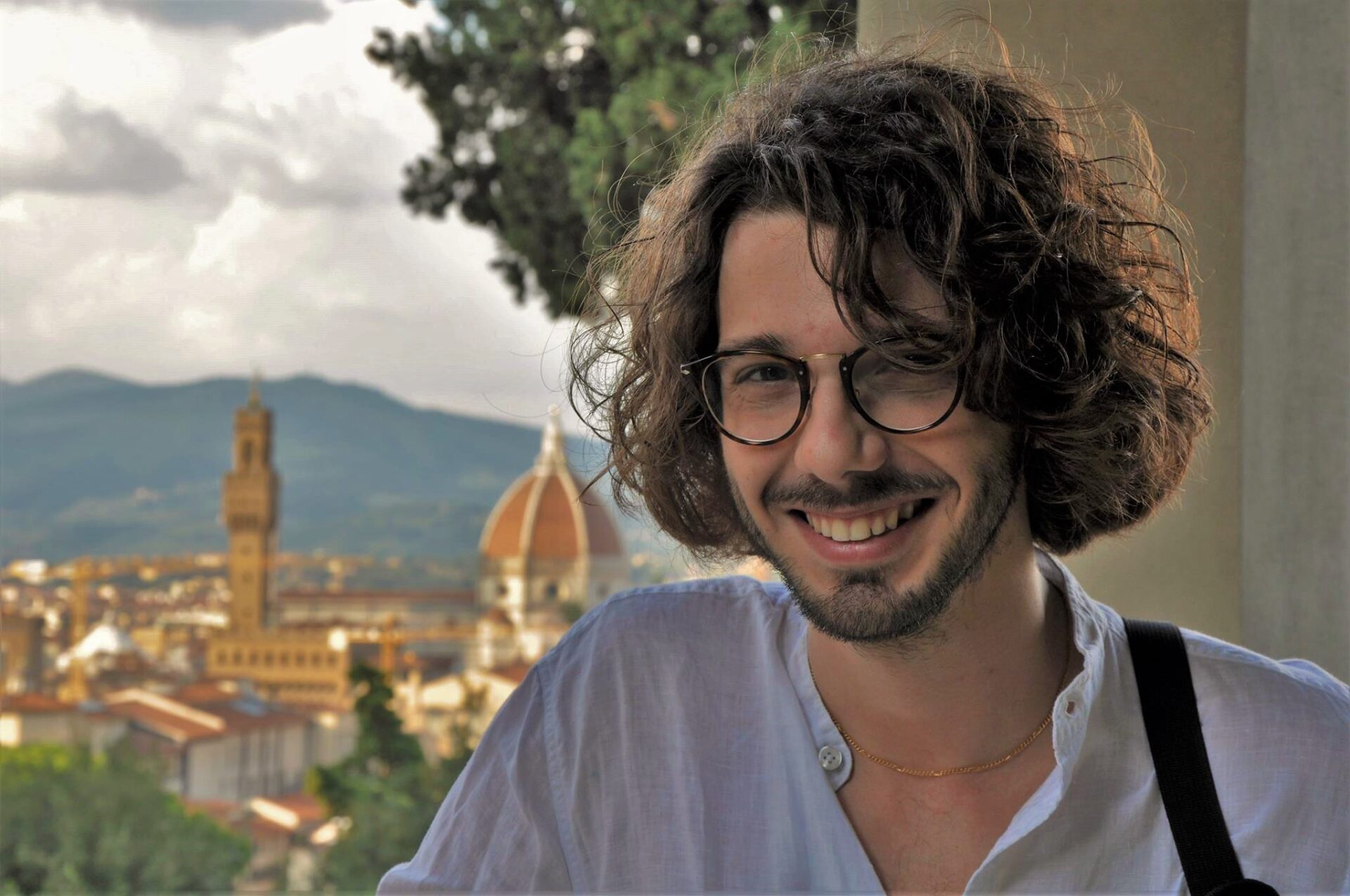
Eduardo De Maio is a final year PhD candidate in History of Art at the University of York, United Kingdom. Supervised by Prof. Elizabeth Prettejohn, Eduardo’s thesis investigates the phenomenon of cultural interchange and transmission between Britain and Italy at the turn of the twentieth century, presenting it as a mutual opportunity for both countries to discover their respective contemporary artistic cultures.
Eduardo holds an MA in History of Modern and Contemporary Art from the University of York, with a dissertation on the relationship between the English sculptor Henry Moore and Tuscany. The research was carried out mainly at the Henry Moore Foundation, The Henry Moore Institute and at the KHI in Florence, with a focus on the innovative exhibition of Moore’s sculptures held at the Forte di Belvedere in Florence in 1972 and its impact on the 1970s-Italian environmental art.
Previously, Eduardo was awarded a BA in Cultural Studies at the University of Florence, Italy, with a thesis in History of Art Criticism, focussing on the Italian critic Roberto Longhi’s early Futurist ekphrasis.
In the meantime, Eduardo has worked at the History of Art Department of the University of York as Graduate Teaching Assistant and as Associate Editor of the Department peer-reviewed journal Aspectus. He previously worked as an exhibition and collection researcher at the Henry Moore Institute in Leeds and at the York Museum Trust.
His further research interests include European and Italian art between 1880s and 1930s, Post-War exhibition practice, Arte Povera and Environmental art, democratization and social commitment in culture.
As a CIMA fellow, Eduardo will investigate the impact of Anglo-American and European social/socialist culture on fin de siècle Italian art and culture, in particular on the gradual development of a social commitment and tendencies to socialism (Humanitarian and Evolutionary), which some Italian artists embraced between the 1880s and 1910s. This theme will be analyzed in the broader context of the fin de siècle internationalism, alongside highlighting its peculiarities as a phenomenon per se, parallel or even clashing with the contemporary influences coming from the rest of Europe and beyond. Most importantly, it will be related to the cultural debate that hinged on the dichotomy of “Art for the few” (elitist) and “Art for the People” (collective), which animated Italian culture for almost four decades between the nineteenth and twentieth centuries.
Camilla Froio
Winter/Spring 2022
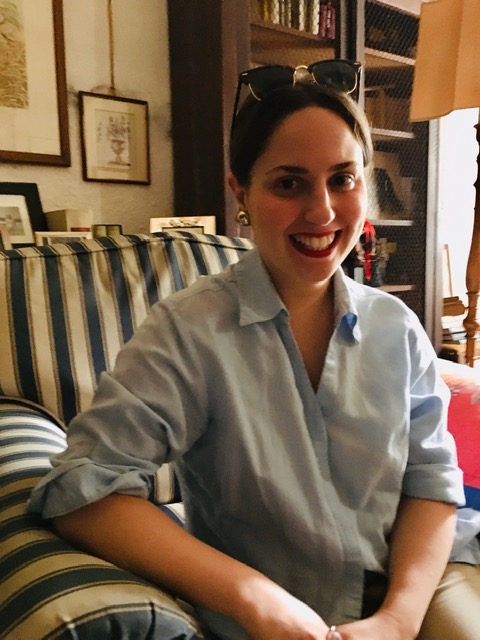
Camilla Froio
Camilla Froio earned her PH.D in Art Criticism and Theory at the University of Florence, Italy, with a dissertation on the process of appropriation and canonization of G.E. Lessing’s “Laokoon” in North-America during the XIXth century, here regarded as a fundamental step to the formalization of the modernist lexicon in America during the 1930s and the 1940s. Camilla’s research especially focused on the analysis of Clement Greenberg’s essay “Towards a Newer Laocoon,” published on “Partisan Review” in 1940, and on the cultural and historical significance of Greenberg’s reference to Gotthold Ephraim Lessing’s treatise. Moreover, her thesis intended to demonstrate that Greenberg’s peculiar choice to reappraise the German classic was partly due to Lessing’s traditional and enduring popularity in North-America during the second half of the XIXth century. This part of Camilla’s study has been published in “Studi di Memofonte” with the title “La cultura nord-americana e il Laokoon di G.E. Lessing: premesse di una fortunata ricezione critica, 1840-1874.” Camilla’s research for her Ph.D thesis was supported by a Getty Library Grant from the Getty Research Institute, which allowed her to study Greenberg’s personal papers, held by the mentioned institution, and to elaborate the hypothesis on the existence of multiple drafts of Greenberg’s essay. An article on this subject, called “Un Unreleased Laokoon: The First Draft of Clement Greenberg’s Towards a Newer Laocoon,” has been recently published in the “Getty Research Journal” (2021).
Over the years, Camilla published a number of articles as well as two books dedicated to Clement Greenberg (A Quality of Jewishness. Ebraismo e modernismo nella critica di Clement Greenberg, 2018; Verso un Laocoonte modernista. Temi, immagini e contesti del Laocoonte di Clement Greenberg, 2020, both for Angelo Pontecorboli Editore, Florence). Camilla took part in the 2018 École de printemps with an essay on the political significance of Clement Greenberg’s “Laocoon,” and recently contributed to the 2021 École de printemps, where she presented a paper on the painter Hans Hofmann and his theory of art. She contributed with the Centro dell’Arte Contemporanea Luigi Pecci (Prato, Italy) on several occasions, giving talks and lectures on topics related to contemporary art. Camilla is currently Cultore della materia in Art History and Criticism at the University of Florence, and conference secretariat for the upcoming 16th Expert Working Group Meeting for the Safeguarding of the Cultural Landscape and Archeological Remains of the Bamiyan Valley World Heritage Property, for the University of Florence.
From these research experiences, Camilla’s interest has gradually gravitated towards topics related to the transcultural interactions between American and European culture, with a particular emphasis on the ideological aspect of knowledge and on the processes of cultural negotiations.
During her time at CIMA, Camilla will be working on the collecting history of Alberto Pasini’s “orientalist” artworks in Northeastern America; she will be highlighting the visual success of Pasini’s paintings, as well as their critical reception and circulation from the 1870s until the first decade of the XXth century. Moreover, Camilla will be examining the depiction and crystallization of the image of the “Italian peasant” that, along with the iconic representation of Muslim subjects, was perceived through the lenses of a preconceived network of stereotypes around Italy’s so-called “Southern question.”
Giorgio Motisi
Winter/Spring 2022
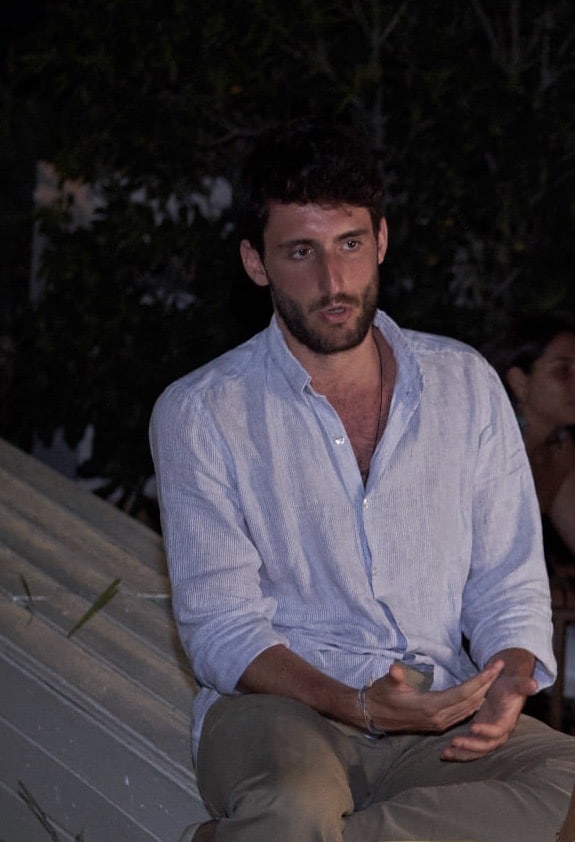
Giorgio Motisi is a PhD candidate in Art History at the Scuola Normale Superiore (Pisa). His doctoral research, supervised by professor Flavio Fergonzi, focuses on the Italian Ultimo Naturalismo (“Last Naturalism”) and Francesco Arcangeli’s work as a critic during the 1950s. Giorgio attended both the University of Pisa and the Scuola Normale Superiore. In 2018, after completing an internship at the Marino Marini Foundation (Pistoia), he defended a thesis on Marini’s portraits. An extract of the thesis has been published in the CIMA journal (Italian Modern Art, 2021). In 2020, he discussed his MA thesis on the portraits of the anti-fascist group Corrente, which emphasized the social and political values of these artworks. The first results of the thesis are about to be presented at a conference at the Kunsthistorisches Institut (Florence 2021). Giorgio’s main area of interest is Italian 20th century painting and sculpture, with an emphasis on their connections to the sociocultural context, the reception of ancient and Renaissance art, and the critical dialogue with the international avant-gard. On these subjects he has contributed book chapters, published articles in leading academic journals (Annali della Scuola Normale Superiore, 2020; L’uomo nero, 2021), and attended international conferences (Pisa 2019; Ravenna 2021; Reims 2021; New York 2021). He is a contributor to Dizionario Biografico degli Italiani (Enciclopedia Treccani), with entries on the painters Filippo de Pisis (2019), Ernesto Treccani (2020), and Italo Valenti (2020). Furthermore, since 2018 he has been on the board of FAcT (Festival of Academic Theater): an association which organizes international festivals for university theater companies. Giorgio’s research project for the 2022 CIMA Fellowship proposes a new way of interpreting an oftenoverlooked issue: the value of titles in socially committed artworks of the late-19th and early-20th centuries. In those decades, indeed, Italian painters and sculptors showed an unprecedented interest in their choice of titles, conceiving them as instruments capable of deeply enriching their works. Taking into account a large number of case studies, the main purpose of the project will be to understand not only the sources but also the reasons and aims of their choices, providing a starting point for analyzing the inner workings of titles, their critical reception and their variations depending on different contexts and audiences.
Aja Martin
Summer-Fall 2021
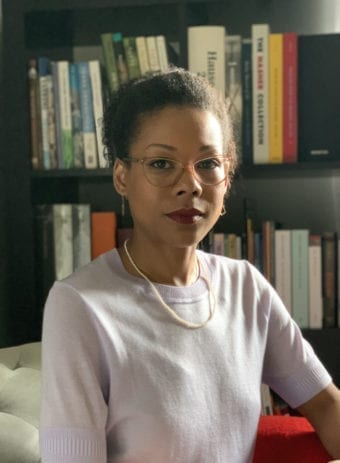
Aja Martin is a doctoral candidate in Art History at Rice University where she studies twentieth-century art and film of Italy. Her dissertation, “Chain of Shadows: Lucio Fontana’s ‘Concetto spaziale, Teatrini,’ and the Modern Grotesque’” addresses that lesser-studied group of shadow-boxes, as well as his “Ambienti spaziali” installations, to suggest how these series chide the artist’s seemingly nihilist claims for painting, proposed both in interviews and in the “Concetto spaziale: Attese” monochrome series. Through careful visual analysis, her project reveals how the series, instead, offer complex formulations of vital boundaries – an act crucial in Fontana’s distinction of works of art from their surrounds and the viewer, from other visual art mediums, and art forms. Given the theatrically-inspired structure of the “Concetto spaziale, Teatrini,” Aja’s project operates within the the broader art-historical dialogue between the theater and modern painting and seeks to extend these ideas toward the filmic frame, also apparent within the shadow box’s structure and color relationships.
Aja holds a Master’s Degree in Art History from Southern Methodist University and has presented her research nationally at graduate conferences, curated numerous contemporary art exhibitions, and served in curatorial departments, institutions and boards across Texas. Her previous research was attuned to the shifting notions of landscape from the medieval to the modern era, with an emphasis on Latin America and the US. Her current work picks up in Argentina, Fontana’s second home and birthplace, but crosses the Atlantic, to Italy, where Fontana would act as an important international conduit connecting with artists across Europe. Aja’s prior research into constructed public and private spaces opened onto notions of technology, vision, and being; which Aja continues to pursue in the work of Lucio Fontana, through his ultimate “spatialist realisms,” the “Concetto spaziale, Teatrini.”
Aja will pursue similar lines of research toward the work of 2020–21 feature artist, Mario Schifano, where she will investigate the artist’s manifestations of presence and absence within hybrid spaces that interface landscape with the framed, even televisual view. Beginning with formal properties, or the thing at hand, she will contribute extensive analyses of select works on display in order to offer new insights on Schifano’s practice, his relationship to American postwar artists, and the temporally dynamic Italian milieu.
